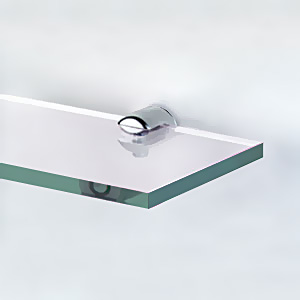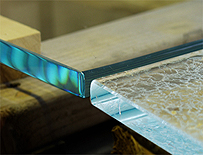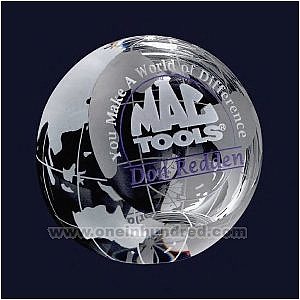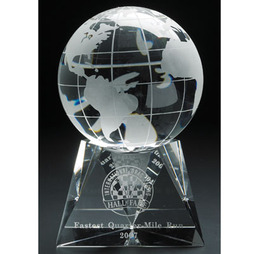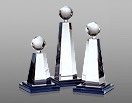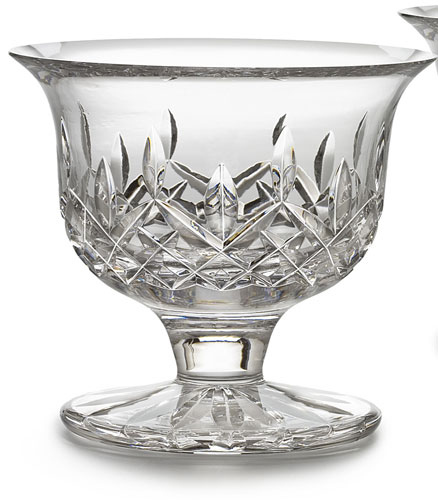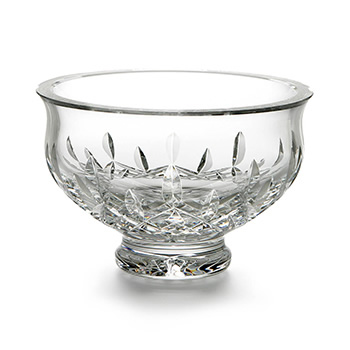The Manufacturing Process of Crystal
-
Mix crystal and red-lead oxide
The crystal “cocktail” is mixed and made into molten crystal in a furnace heated to 2,192 F (1,200 C). The red-lead oxide is introduced into the furnace on a rapidly moving air current in a difficult procedure that can create different grades of purity. The furnace conditions must also be carefully controlled so the lead fully oxidizes and doesn’t leave metallic lead, which not only discolors the glass but also attacks the fireclay of the furnace. The lead adds density to the glass so it is heavier; this weight advantage over ordinary glass also changes the crystal’s light diffraction properties and the sound or ring of the crystal when it is struck.
-
Create the basic shape
Lead crystal is blown glass, but, because of its thickness, it requires a team of four to seven artists who are as well coordinated as any team of athletes. Wood blocks and molds are used to create the basic shape of the object called a crystal chamber. As soon as the molten glass touches the mold, it begins to cool instantly so glass blowing is a process of seconds. The chamber is also known as hollowware because it has an opening that is the functional part of the beverage glass, vase, or decanter.
-
Blow Glass
The team of glass blowers uses physical strength, breath control, and dexterity to create the chamber with a certain thickness. This skill is only developed by experience. The thickness must be suitable to the object itself but also to the depth of the facets that will be cut in the glass. Near the furnace, other parts are added to the chamber. For example, a piece of molten glass is attached to the side of a decanter to form a handle and shaped to the perfect curve in one quick motion. Again, the glass will begin to harden almost immediately in the open air.
-
Aneal
To slow that hardening process, the blown crystal piece is transferred to an annealing oven. If the crystal cools too quickly, stresses will be induced in the crystal as varying thicknesses cool differently and the crystal will contract too rapidly. The annealing process takes from 2-16 hours depending on the size and configuration of the piece.
-
Cut
The cooled crystal is now a “blank canvas” for the glass cutter. To prepare for cutting, the pattern is drawn on the vessel, usually with red-lead and turpentine. The design is then roughed out with a power-driven wheel equipped with different edges depending on the type of cut required. These cut surfaces are coarse and not as long or as deep as the finished cuts. The cutters are true artists who use sight, feel, physical strength, and their extraordinary memory for patterns, details, and cuts. The types of cuts are wedge and flat cuts. Wedge cuts are made with diamond-tipped wheels and produce deep facets. Flat cuts are made with the same equipment but are not as angled; they provide contrast with the deeper wedge cuts.
-
Smooth
In the smoothing process, a sandstone wheel is used to dress the rough cuts; this part of the process requires the greatest skill because it establishes the finished design.
-
Polish
Finally, the finished vessel is polished by dipping it into a mixture of sulphuric and hydrofluoric acids. The acid bath attacks the entire surface of the object and removes a very thin layer while leaving a lustrous and uniform finish.
-
Etch & Engrave
The process of intaglio, which uses tiny copper wheels that revolve slowly to engrave portraits or other illustrations and information into the object, is also used to engrave some pieces. Most engraved pieces, like large sports trophies, are one-of-a-kind items that are completed on commission. They may require many hours of etching. The finished piece is carefully inspected and packaged in materials designed to display and protect the object.
Crystal Quality Control
Quality is a continuous process at the lead-crystal factory. The artists themselves provide the first level of quality control through their experience and unique skills. No two pieces are identical despite adherence to designs, heritage, and standardization of patterns and cuts.
Stringent inspections are performed at each step of the process. This helps avoid wastage in that in imperfectly cooled piece is never sent to the cutter; inspections also ensure conformity with the acceptable range of variations that are inevitable in handwork and among individual cutters and other artists.
Byproducts Waste
There are no byproducts from production of lead crystal. Waste is avoided in raw materials and by careful control of processes like annealing. Glass factories have the advantage that their products can be melted again in the furnace, so many boast that they produce no seconds because of this luxury of being able to fully recycle an imperfect product.
